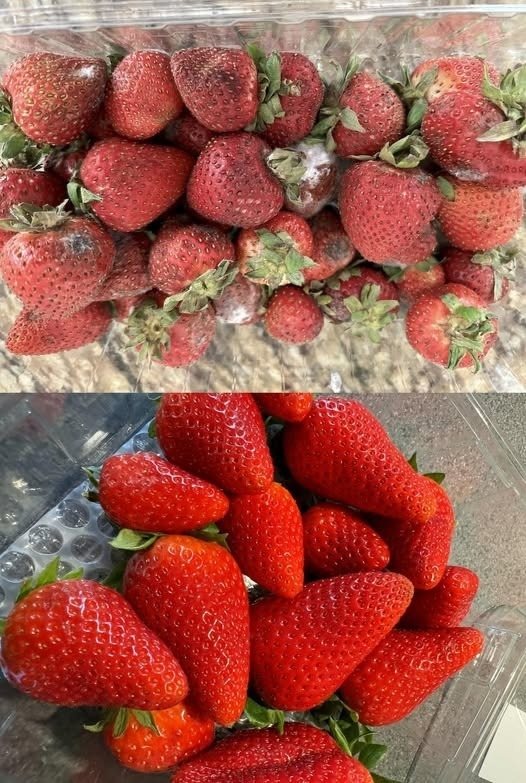ADVERTISEMENT
### 2. **Inspect the Color**
Look for strawberries that are bright red in color, with no green or white patches. Strawberries should have a uniform color, which indicates ripeness. Avoid berries with discoloration or bruising.
### 3. **Examine the Leaves**
The leaves (or “calyx”) at the top of the strawberry should be green and fresh. Brown or wilted leaves can be a sign of age or improper handling.
### 4. **Smell the Strawberries**
Ripe strawberries have a sweet, fragrant smell. If the strawberries you’re considering have little to no aroma, they may not be fully ripe or fresh.
### 5. **Avoid Containers with Excess Moisture**
When purchasing strawberries, always check the container for moisture. Excess water in the container is a sign that the strawberries have been exposed to moisture, which can cause them to spoil more quickly.
## The Best Ways to Store Strawberries for Maximum Freshness
Once you’ve selected the best strawberries, storing them properly is essential to preserving their freshness. There are a number of techniques you can use to extend the life of your strawberries, and each method depends on your available storage space, how quickly you plan to consume the fruit, and how you want to use the strawberries later.
### 1. **Refrigeration: The Standard Method**
The most common and effective method for keeping strawberries fresh longer is refrigeration. The cool temperature of the fridge helps slow down the ripening process and prevents spoilage. However, it’s essential to store them properly to prevent excess moisture buildup, which can cause mold growth.
#### How to Refrigerate Strawberries:
1. **Don’t Wash Before Storing**: Avoid washing strawberries before refrigerating them, as excess moisture can promote mold growth. Instead, wash them just before you’re ready to eat them.
2. **Use a Shallow Container**: Place the strawberries in a shallow container or a ventilated berry container to allow airflow around them. This helps reduce moisture buildup and keeps the strawberries from getting crushed.
3. **Line with Paper Towels**: If you notice any excess moisture in the container, line the bottom with paper towels to absorb the moisture. Change the paper towels every few days.
4. **Keep the Strawberries in Their Original Container**: Many strawberry containers come with holes to allow ventilation, which is ideal for refrigeration. Keep the strawberries in their original container to maximize air circulation.
#### Ideal Storage Temperature:
Store strawberries in the fridge at a temperature of 35°F to 40°F (1.5°C to 4°C). Do not store them in the coldest part of the fridge, as extreme cold can damage the texture and flavor of the fruit.
### 2. **Freezing Strawberries: A Long-Term Solution**
Freezing strawberries is an excellent way to preserve them for long-term storage, especially if you have an abundance of berries that you won’t be able to eat right away. Frozen strawberries are perfect for smoothies, desserts, or sauces.
How to Freeze Strawberries:
1. **Wash and Dry**: Rinse the strawberries under cold water, then pat them dry with a clean towel. Make sure there is no excess moisture on the fruit.
2. **Remove the Hulls**: Use a strawberry huller or a knife to remove the green tops (calyx) and the leaves.
3. **Freeze on a Baking Sheet**: Arrange the strawberries in a single layer on a baking sheet lined with parchment paper. This prevents the berries from sticking together as they freeze.
4. **Flash Freeze**: Place the baking sheet in the freezer and freeze the strawberries for 2-3 hours or until solid.
5. **Transfer to a Storage Bag**: Once frozen, transfer the strawberries to a freezer-safe bag or container. Squeeze out as much air as possible to prevent freezer burn.
For Complete Cooking STEPS Please Head On Over To Next Page Or Open button (>) and don’t forget to SHARE with your Facebook friends
